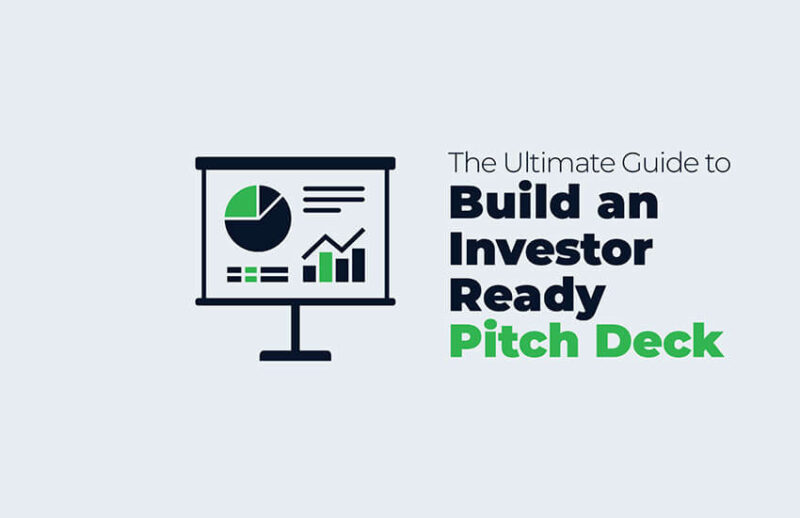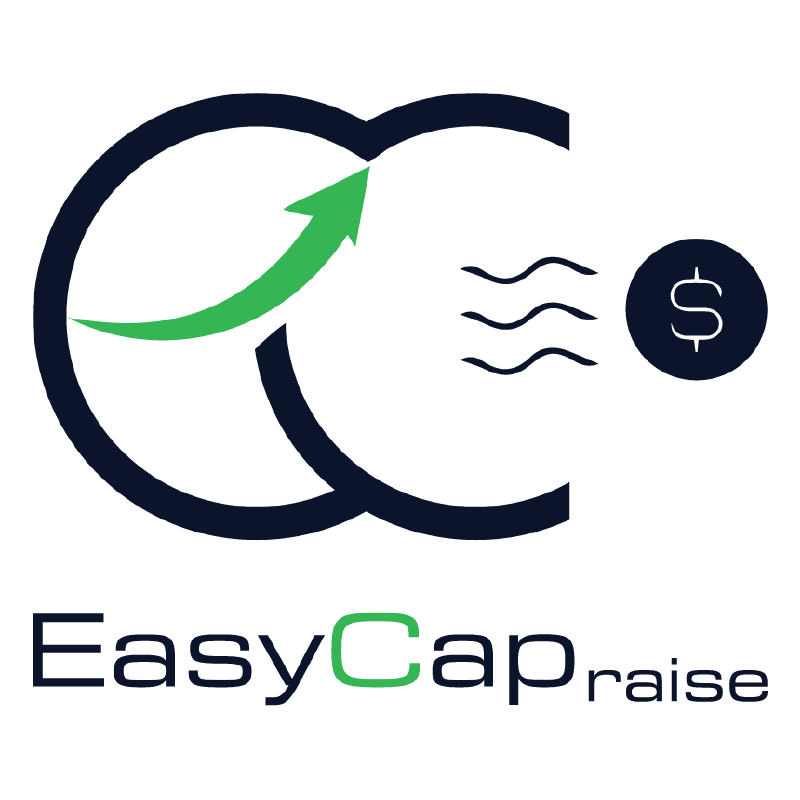Learn pitch deck writing that impresses investors with this step-by-step guide. Tailor your pitch, craft a compelling story and more.
Startup Fundraising Mastery: The Pitch Deck Writing Guide

- The Ultimate Guide to Pitch Deck Writing for Startups: From Idea to Investment
- A Step-by-Step Guide to Understanding and Tailoring Your Pitch Deck to Your Audience
- The Art of Storytelling: How to Create a Memorable and Persuasive Presentation
- Creating a Visually Appealing Pitch Deck: Design Tips and Best Practices
- Mastering the Art of Pitching: Tips and Tricks for a Compelling and Confident Pitch
- Summary
- FAQ About Pitch Deck Writing:
The Ultimate Guide to Pitch Deck Writing for Startups: From Idea to Investment
Raising funds for your startup can be a daunting task, but a well-crafted pitch deck can make all the difference. As a startup founder, you want to make sure that your pitch deck communicates your company’s solution, business model, growth potential, and financial projections in a clear and compelling way to potential investors. In this guide, we’ll explore how to create a pitch deck that will help you secure the funding you need to grow your business.
We’ll cover everything from understanding your audience and crafting a compelling story, to design and presentation tips. By the end of this guide, you’ll have a solid understanding of the key elements of a pitch deck and the skills you need to create one that will impress investors and increase your chances of securing funding.
Key takeaways:
- A well-crafted pitch deck is crucial in the process of raising funds for your startup.
- Tailoring your pitch deck to your specific audience is important to effectively communicate your business’s potential.
- Crafting a compelling story can help to effectively communicate the potential of your business.
- Using visually appealing designs can help to communicate your story in an engaging and effective way.
- Presenting is an important step in the process of raising funds for your startup, and having a pitch script can help to increase the chances of securing funding.
A Step-by-Step Guide to Understanding and Tailoring Your Pitch Deck to Your Audience
Before you begin crafting your pitch deck, it’s important to take the time to understand your audience. This includes identifying and researching potential investors, as well as tailoring your pitch deck to meet their specific needs and interests.
-
Identifying Potential Investors:
The first step in understanding your audience is identifying potential investors. This can include venture capitalists, angel investors, crowdfunding platforms, and even friends and family. Consider the type of funding you’re looking for and the stage of your business when identifying potential investors. For example, if you’re a pre-seed startup, you may want to focus on angel investors or crowdfunding platforms, while later-stage startups may be better suited to venture capitalists.
-
Researching Potential Investors:
Once you’ve identified potential investors, it’s important to research them. This includes learning about their investment history, portfolio companies, and areas of interest. This information will help you tailor your pitch deck to their specific needs and interests. Additionally, you can use this research to personalize your pitch and make it more likely that you’ll secure funding.
-
Tailoring Your Pitch Deck to Your Audience:
Once you’ve identified and researched potential investors, it’s time to tailor your pitch deck to them. This includes using the information you’ve gathered to create a narrative that speaks to their specific interests and needs. For example, if you’ve identified an investor who is particularly interested in sustainable and environmentally friendly products, you’ll want to make sure that your pitch deck highlights any eco-friendly aspects of your business, such as the materials you use, your manufacturing process, and any certifications your products have. Additionally, use the information you’ve gathered to personalize your pitch and make it more likely that you’ll secure funding.
The Art of Storytelling: How to Create a Memorable and Persuasive Presentation
A pitch deck is not just a collection of facts and figures, it’s also a story that helps potential investors understand your business, its potential, and why they should invest. In order to make your pitch more effective, it’s important to craft a compelling story that connects with your audience.
-
The Importance of Storytelling:
Storytelling is an essential part of a pitch deck because it helps to engage your audience and create an emotional connection. Instead of just presenting dry facts and figures, storytelling allows you to present your business in a way that is relatable, memorable, and persuasive.
-
Techniques for Crafting a Compelling Story:
There are several techniques that you can use to craft a compelling story for your pitch deck. One of the most effective is using a problem-solution narrative. This involves highlighting a problem that your business is solving and showing how your solution is unique and effective. Another technique is using a “before-and-after” narrative, which helps to show the impact of your solution.
You can also use storytelling to create a sense of urgency, by highlighting the need for your solution and the potential consequences of not solving the problem. Additionally, you can use storytelling to create a sense of excitement and enthusiasm, by highlighting the potential of your business and the benefits.
-
Our Recommended Story:
One of the most effective ways to structure a compelling story is by following a tried-and-true format that has been successful for many startups. At Easy Capraise we recommend the following structure for your pitch deck:
Introduction:
- Cover Page: A simple but visually appealing design that represents your business.
- Traction Teaser: Show some early achievements or traction you have already gained.
Current State:
- Problem / Opportunity: Highlight the problem or opportunity that your business addresses.
- Solution / Value Proposition: A slide that presents your solution or value proposition that you offer.
Product:
- Product Demo / Benefit: Provide a detailed overview of your product or service and its benefits.
- Infrastructure: A slide that shows any infrastructure or technologies you’re using.
- Market Validation / Why Now: A section to show why your solution is needed now and how it is addressing the market.
- Business Model: Explain how you plan to make money.
- Milestones and Roadmap: Show your upcoming goals and plans.
Market:
- Traction: A section that shows any traction you’ve already gained.
- Go-to-Market Strategy: Explain how you plan to reach your target market.
- Market Size (TAM slide): A slide that shows the total addressable market for your product.
Why Us:
- Competition: Explain how you are different from your competitors.
- Funding Team: A slide that introduces your team and their qualifications and experiences.
Total Ask:
- Financial: Show your financials, including revenue projections and your current funding status.
- Ask and Use of Funds: Explains how much funding you are seeking and how you plan to use the funds.
Closing:
- Thank You / Contact: A slide that provides contact information for follow-up.
It’s important to keep in mind that while this structure provides a comprehensive foundation for your pitch deck, it’s also important to be mindful of the number of slides. A maximum of 15 slides is a good rule of thumb, as it forces you to be concise and focus on the most important information. Choosing which slides to include and how to present the information requires careful judgment and is crucial for effectively communicating your story to potential investors. Remember, your pitch deck is a visual representation of your business and it’s essential to make a lasting impression. It is advisable to take the help of professionals who have experience in crafting compelling stories and creating pitch decks that effectively communicate the business potential to potential investors.
Creating a Visually Appealing Pitch Deck: Design Tips and Best Practices
The design of your pitch deck is just as important as the content. A visually appealing design can help to grab the attention of potential investors and make a lasting impression. Additionally, it can help to make complex information easier to understand and retain.
When designing your pitch deck, it’s important to keep in mind the following guidelines:
- Keep it simple: Avoid using too many colors, fonts, or graphics, as it can be distracting. Stick to a simple color scheme and a consistent layout throughout the deck.
- Use high-quality images: Use high-resolution images that are relevant to your business and help to tell your story.
- Be consistent: Use the same design elements and layouts throughout the deck to create a cohesive look.
- Use white space: Use white space effectively to create a clean and uncluttered look.
It’s also important to note that a good design takes time, and it’s not something that you can rush. It’s always recommended to work with a professional designer who can help you to create a visually appealing design that effectively communicates your story. Our portfolio includes a selection of previous deck designs that we have created for our clients. You can see how we have used different design elements such as colors, typography, images, and layouts to present information in an engaging and effective way. It’s good to take inspiration from these designs for your own pitch deck.
Mastering the Art of Pitching: Tips and Tricks for a Compelling and Confident Pitch
Presenting your pitch deck is an important step in the process of raising funds for your startup. It’s a chance to communicate your story and the potential of your business to potential investors. There are several ways to present your pitch deck, including in-person meetings, Zoom meetings, and video decks. Another important aspect of a successful presentation is having a pitch script. A pitch script is a written document that outlines the key points of your presentation. It helps you to stay on track and ensures that you communicate all the important information. Having a pitch script can help you to present with confidence and increase your chances of securing funding.
Summary
In this guide, we’ve provided an in-depth overview of how to create a pitch deck that effectively communicates your business’s potential to potential investors. We’ve covered important topics such as understanding your audience, crafting a compelling story, designing a visually appealing pitch deck, and giving a successful presentation. We also highlighted the importance of having a pitch script to increase the chances of securing funding.
At Easy Capraise, we understand the importance of creating a top-quality pitch deck and providing a successful presentation. Our expert team has the experience and skills to help you every step of the way. We offer a variety of services, including writing pitch decks, presentation support, and consulting.
If you’re ready to take the next step in securing funding for your startup, book a call with us today. Our team will be happy to guide you through the process and help you create a pitch deck that effectively communicates your business’s potential to potential investors.
FAQ About Pitch Deck Writing:
What is a pitch deck and why is it important for startups?
A pitch deck is a document that communicates a startup’s solution, business model, growth potential, and financial projections to potential investors. It is important because it can help a startup founder make a compelling pitch and increase the chances of securing funding.
What are the key elements of a successful pitch deck?
The key elements of a successful pitch deck include understanding the audience, crafting a compelling story, a clear solution, a well-defined business model, growth potential, and financial projections.
How can understanding your audience help in creating a pitch deck?
Understanding your audience is important in creating a pitch deck because it helps to tailor the pitch to meet their specific needs and interests. This includes identifying potential investors, researching them, and using that information to create a narrative that speaks to their specific interests and needs.
How can storytelling help in pitch deck creation?
Storytelling is an essential part of a pitch deck because it helps to engage your audience and create an emotional connection. It allows you to present your business in a way that is relatable, memorable, and persuasive. Techniques for crafting a compelling story include using a problem-solution narrative, a “before-and-after” narrative, and creating a sense of urgency.
What are some effective techniques for crafting a compelling story in a pitch deck?
Some effective techniques for crafting a compelling story in a pitch deck include using a problem-solution narrative, a “before-and-after” narrative, and creating a sense of urgency. These techniques help to highlight the problem that your business is solving, the impact of your solution, and the potential consequences of not solving the problem respectively.
What is the recommended story structure for a pitch deck?
The recommended structure includes an introduction with a cover page, traction teaser, current state, problem/opportunity, solution/value proposition, product demo/benefit, infrastructure, market validation/why now, business model, milestones and roadmap, market traction, go-to-market strategy, market size, competition, funding team, total ask, financials, ask and use of funds, and closing.
Contact us
Good to have you here! If you have any queries, please leave your message. Our team will reach out soon:)
.




